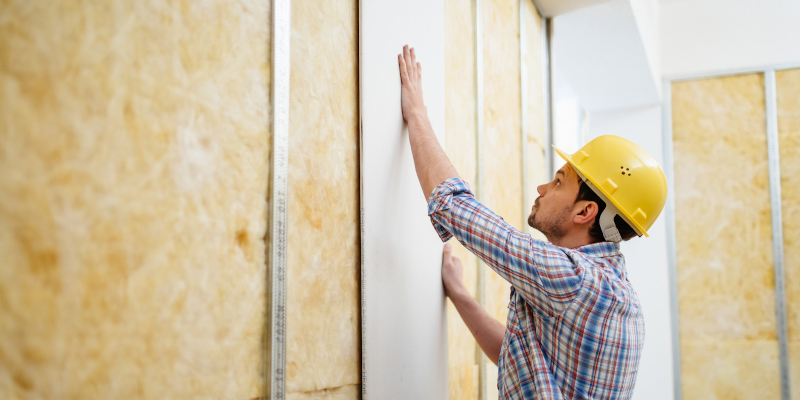Drywall Setup Made Easy: Tips for Perfect Results
Drywall setup is typically viewed as an overwhelming task, yet with the ideal approach and knowledge, it can come to be a manageable venture. Choosing top quality products and preparing the installment location are critical initial steps that establish the foundation for success. Understanding methods for cutting, hanging, and ending up drywall can considerably impact the end result. As we check out these vital pointers, you may discover that even the smallest modifications in your technique can cause extremely enhanced results, leaving you to take into consideration how these techniques can change your following project.
Picking the Right Products
Selecting the suitable materials for drywall setup is crucial to attaining a resilient and cosmetically pleasing finish. sheetrock repair fort worth. The primary element, drywall sheets, commonly can be found in numerous thicknesses, with 1/2-inch sheets being standard for interior wall surfaces. For areas needing added moisture resistance, such as restrooms or kitchen areas, take into consideration using eco-friendly board or concrete board, which are specifically made to endure moisture

Additionally, picking the appropriate bolts-- either screws or nails-- is important for protecting the drywall to the framing. Drywall screws are usually preferred for their holding power and decreased risk of standing out. Finally, think about the complements such as guide and paint, which not just boost the appearance however also secure the drywall from dampness and wear.
Preparing the Installation Area
Prior to starting the drywall installment process, it is essential to prepare the setup area thoroughly. A clean work area minimizes the danger of damage to existing things and enables for efficient movement during installation.
Next, examine the wall surfaces and ceiling for any flaws, such as splits, openings, or mold. Address these issues beforehand; spot any type of problems and permit sufficient time for repair services to completely dry. Additionally, make certain that electric outlets, buttons, and pipes are appropriately placed and made up, as this will certainly affect drywall placement.
Take into consideration the ecological conditions too. A secure temperature level and humidity degree are vital for ideal bond and efficiency of the drywall materials. If necessary, make use of a dehumidifier or heating unit to create suitable conditions.
Trimming and Hanging Drywall
The secret to reliable drywall installation depends on the precise cutting and dangling of the panels. Begin by gauging the space precisely, thinking about any blockages such as electric outlets or windows. Use a straight edge and an energy knife to score the drywall along your dimensions, then snap it along the racked up line for a clean break. For even more intricate cuts, such as around outlets, a drywall saw can be made use of for precision.

Always work from the top down and entrusted to right, guaranteeing that you keep a staggered pattern to improve stability. Effectively hanging the drywall sets the foundation for a smooth surface, inevitably leading to superior results in your drywall task.
Insulation and Mudding Strategies
While appropriate cutting and dangling of drywall establishes the stage, the following vital action involves understanding taping and mudding strategies to make sure a seamless surface. Insulation is necessary for strengthening joints and protecting against splits; it includes installing tape right into the used joint substance (mud) Beginning with a top quality fiberglass or paper tape, using the tape over the joint and pressing it right into the wet mud utilizing a taping knife, guaranteeing no air bubbles remain.
Once the tape remains in location, use a slim layer of joint substance over the tape, feathering the sides to produce a smooth websites change to the drywall surface. Permit this layer to dry entirely before sanding it gently to eliminate imperfections. Repeat this procedure, using additional layers of mud as required-- usually 2 to 3 layers-- while gradually expanding the application location with each layer to accomplish a seamless look.
After the final layer dries, sand the surface with a more fine-grit sandpaper up until smooth. drywall repair. Bear in mind to put on a mask throughout sanding to prevent inhaling dirt bits. Grasping these taping and mudding techniques is important for attaining a professional-quality finish in your drywall installment
Finishing Touches for Excellence
Attaining a remarkable drywall installation surpasses mudding and taping; it culminates in the finishing touches that boost the total look. These last actions are critical in making sure a professional-grade finish that enhances the appearances of your room.
Begin by sanding the dried out joint compound to develop a smooth surface. Use a fine-grit sandpaper and a fining sand block or pole sander click for optimum control. Pay particular interest to sides and corners, as these areas often tend to call for more meticulous job. After sanding, wipe down the walls with a wet towel to get rid of any dust particles, making certain a clean surface for painting.
Next, apply a primer specifically developed for drywall. This action is important, as it aids secure the joint substance and provides a consistent base for the overcoat. Once the primer dries, inspect for any kind of blemishes, and retouch as required.
Conclusion
In verdict, successful drywall installation pivots on the careful option of materials, thorough prep work of the installation area, and precise implementation of cutting and hanging techniques. Mastery of taping and mudding procedures is crucial for achieving a smooth coating.
Drywall setup is usually viewed as a complicated job, yet with the right strategy and understanding, it can become a workable venture.Selecting the appropriate materials for drywall setup is crucial to achieving a sturdy and visually pleasing finish.Before beginning the drywall installment process, it is necessary to prepare the installment location completely. Mastering these taping and mudding methods is critical for attaining a professional-quality coating in your drywall installation.
In verdict, successful drywall setup hinges on the mindful option of materials, extensive preparation of the installment area, and accurate execution of reducing and hanging techniques.